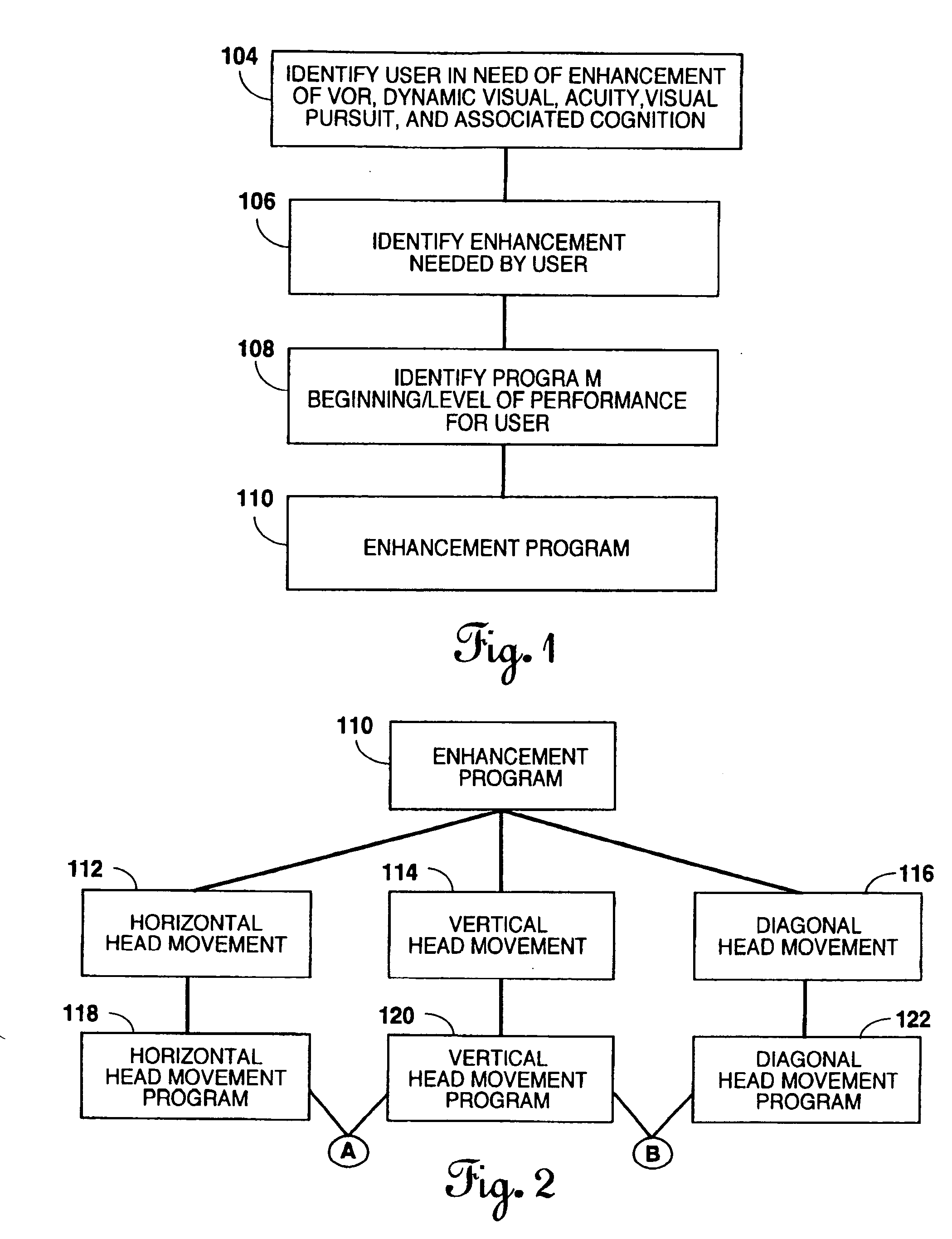Method for balance enhancement through vestibular, visual, proprioceptive, and cognitive stimulation
a cognitive stimulation and vestibular technology, applied in the field of balance enhancement through vestibular, visual, proprioceptive, cognitive stimulation, can solve the problems of ineffective compensation, less accurate vor at lower frequencies, and blurred vision, so as to and improve his or her balance.
- Summary
- Abstract
- Description
- Claims
- Application Information
AI Technical Summary
Benefits of technology
Problems solved by technology
Method used
Image
Examples
Embodiment Construction
[0032]FIG. 1 is a flow-chart of pre-enhancement protocol. The first step in the pre-enhancement protocol is to identify a user in need of balance enhancement, i.e. enhancement of the vestibular ocular reflex (VOR), dynamic visual acuity, visual pursuit, and associated cognition at 104. Next, the enhancement professional will identify the enhancement needed by the user at 106. Once the necessary enhancement is determined, the enhancement professional will identify the program beginning / level of performance for the user at 108. The program beginning / level of performance depends on several characteristics of the user including age, medical condition, specific abnormality, athletic ability, the specific sport or position played where athletic enhancement is involved, the specific vocational skills to improve when professional enhancement is involved, and the goals of the user. Once the program beginning / level of performance has been determined, the professional can proceed to the chosen...
PUM
 Login to View More
Login to View More Abstract
Description
Claims
Application Information
 Login to View More
Login to View More - R&D
- Intellectual Property
- Life Sciences
- Materials
- Tech Scout
- Unparalleled Data Quality
- Higher Quality Content
- 60% Fewer Hallucinations
Browse by: Latest US Patents, China's latest patents, Technical Efficacy Thesaurus, Application Domain, Technology Topic, Popular Technical Reports.
© 2025 PatSnap. All rights reserved.Legal|Privacy policy|Modern Slavery Act Transparency Statement|Sitemap|About US| Contact US: help@patsnap.com



